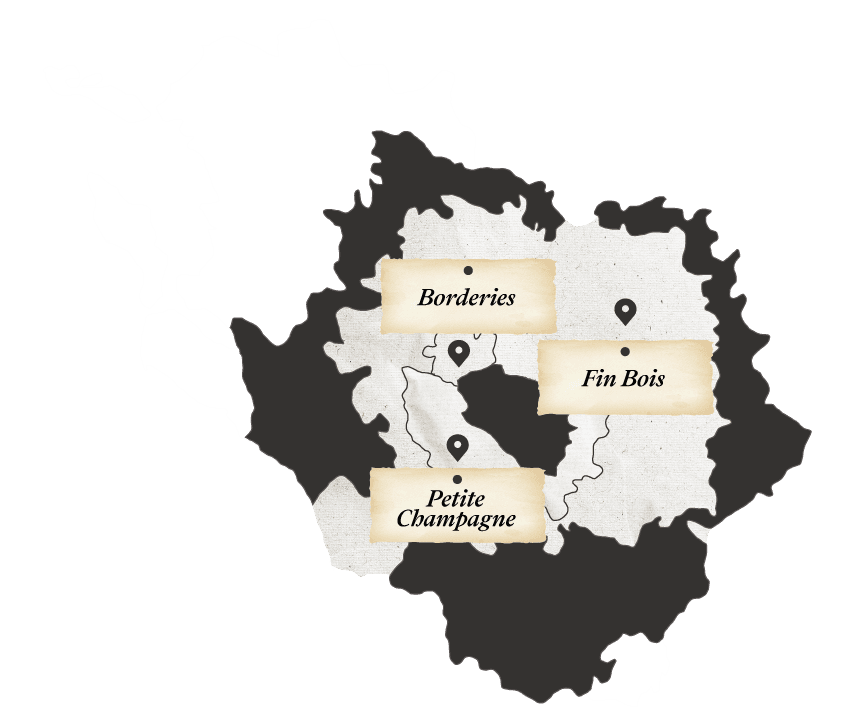Petite Champagne
Much larger than the Grande Champagne, it surrounds it on all sides except the north. It too produces excellent eaux-de-vie with all the qualities of its opulent neighbour, but perhaps with a little less finesse. They reach their optimum quality after a shorter ageing period than Grande Champagne eaux-de-vie.
The soil in Petite Champagne is very similar to that of Grande Champagne. However, the soil is a little lighter and a little deeper. This cru benefits from both the oceanic climate in the west and the continental climate in the east.
It should be noted that "cognacs" presented under the complementary geographical denomination "Fine Champagne" have organoleptic characteristics resulting from the blending of eaux-de-vie from Grande Champagne (at least half) and Petite Champagne.
Borderies
This is the smallest area in the Cognac region. It lies on the right bank of the Charente, just outside Cognac.
Its eaux-de-vie are highly prized and very similar to those of its two big sisters. They are sought after for their bouquet and sweetness, but they age more quickly than those from Champagne and have a little less finesse.
The upper layers of the subsoil were decalcified during the tertiary period, which explains some of the unusual plant associations, such as walnut and chestnut.
During the Hundred Years' War, the inhabitants of the Charente left their land fallow and it was soon covered with undergrowth and forests, hence the expression: "The forest came to France through the English". But gradually, the growing success of cognac encouraged landowners to plant new vineyards, and the woods disappeared to make way for the vines.
Fins bois
This region forms a vast belt around Grande and Petite Champagne and the Borderies. Its eaux-de-vie are round and supple, but age rather quickly and are less robust. The fruity bouquet is reminiscent of pressed grapes.
The subsoil, made up of hard limestone, is very varied.
In the northern part of the region, the soil is "Groies" (Jurassic). In the southern part, the cretaceous is associated with tertiary soils.





